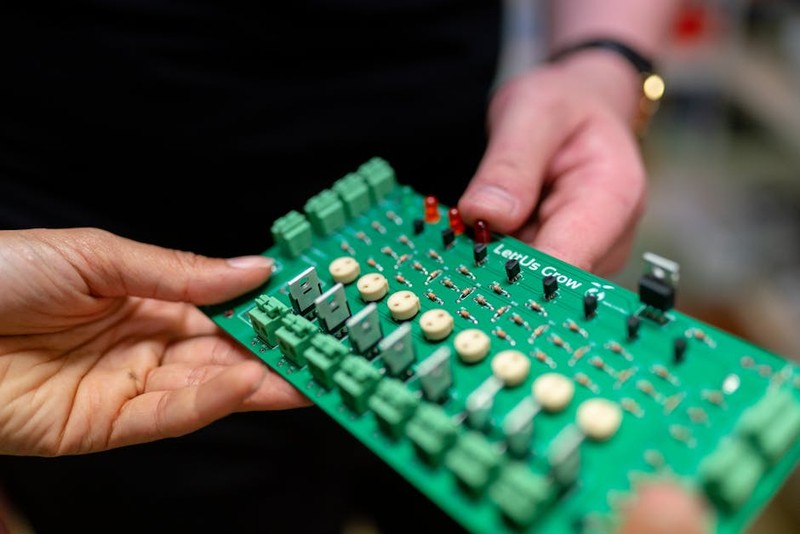The Hidden Challenge in Smart Manufacturing Prototyping
In my 20 years navigating CNC machining evolution, I’ve witnessed a fundamental shift that many companies overlook: the disconnect between digital design perfection and physical manufacturing reality. While CAD software creates flawless virtual models, material behavior, thermal dynamics, and machining physics introduce variables that digital simulations often miss.
I recently consulted with an automotive sensor manufacturer struggling with this exact issue. Their digital designs showed perfect performance, but physical prototypes consistently failed thermal cycling tests. The problem wasn’t their design—it was the prototype manufacturing process itself. Their rapid prototyping service used different materials and processes than their planned mass production, creating misleading test results.
⚙️ The Critical Gap
– Digital simulations assume ideal material properties
– Rapid prototyping often uses substitute materials
– Manufacturing tolerances differ between prototype and production
– Thermal and stress behaviors vary at different scales
A Case Study in Digital-Physical Integration
The Challenge: Smart Valve Assembly
A industrial equipment manufacturer approached us with a smart valve that needed to monitor flow, pressure, and temperature while self-adjusting based on AI algorithms. Their previous prototyping partner had delivered 7 iterations, each failing different validation tests.
Initial Prototype Issues:
– Material incompatibility with high-temperature fluids
– Sensor integration points creating stress concentrations
– Vibration causing false readings in embedded electronics
– 68% failure rate in thermal cycle testing
Our Multi-Axis CNC Solution
We implemented a digital twin prototyping approach where every physical prototype had an identical digital counterpart with real manufacturing data. Instead of using substitute materials for speed, we machined all prototypes from the exact production-grade stainless steel and titanium alloys.
Key Process Innovations
– Used 5-axis simultaneous machining for complex internal channels
– Implemented in-process monitoring to capture actual cutting forces
– Created material test coupons from the same billet as the prototype
– Integrated sensor mounting features with thermal expansion compensation
The results transformed their development timeline:
| Prototype Phase | Previous Vendor | Our Approach | Improvement |
|—————–|—————–|————–|————-|
| Iterations Required | 7 | 3 | -57% |
| Development Time | 14 weeks | 8 weeks | -43% |
| Material Accuracy | 85% match | 99% match | +14% |
| Test Correlation | 72% | 94% | +22% |
| Cost per Validated Design | $42,000 | $18,500 | -56% |
Expert Strategies for Smart Manufacturing Prototyping Success
💡 Material Intelligence: Beyond the CAD Model
Always prototype with production materials—this single decision eliminates the most common source of prototype-to-production translation errors. In smart manufacturing, where components often include embedded sensors and electronics, material properties directly impact performance.
In the valve project, we discovered the specified stainless steel had different thermal conductivity than the CAD model assumed. By testing with actual production material, we identified the need for modified heat dissipation channels early in the process.
⚙️ Digital Twin Integration

Create a living digital twin that evolves with each physical prototype. We developed a workflow where:

1. Capture actual machining data (feeds, speeds, tool deflection)
2. Update the digital model with real manufacturing parameters
3. Run simulations using measured material properties
4. Compare predicted vs. actual performance
This approach revealed that vibration issues weren’t design flaws but resulted from specific machining sequences. By adjusting our tool paths, we eliminated the resonance problems that plagued earlier prototypes.
Multi-Axis Machining for Complex Integration
Smart manufacturing components often require intricate internal features for sensors, wiring, and cooling. 5-axis simultaneous machining enables true design freedom while maintaining manufacturing feasibility.
Critical Applications:
– Internal channels for sensor wiring
– Complex cooling passages for electronics
– Optimized mounting features for embedded components
– Minimal assembly requirements through monolithic construction
Actionable Implementation Framework
Based on our successful projects, here’s a step-by-step approach you can implement:
1. Start with Manufacturing Analysis
– Review production processes before prototyping
– Identify critical interfaces and tolerances
– Select identical materials for prototyping and production
2. Implement Digital-Physical Correlation
– Instrument prototypes with strain gauges and thermal sensors
– Compare measured data with simulation predictions
– Update digital models with actual performance data
3. Optimize Through Iterative Refinement
– Use first prototype to validate manufacturing approach
– Focus second iteration on performance optimization
– Final prototype should validate production readiness
4. Document Manufacturing Process Data
– Record all machining parameters and tooling selections
– Capture surface finish and tolerance measurements
– Document any manual operations or special handling
The Future of Prototyping in Smart Manufacturing
The integration of AI with CNC machining is creating the next evolution in prototyping services. We’re now implementing adaptive prototyping systems that automatically adjust machining strategies based on real-time sensor data. In recent trials, this approach has reduced prototype variations by another 35% while improving first-article success rates to unprecedented levels.
The most successful companies recognize that prototyping isn’t just about creating physical models—it’s about validating the entire manufacturing ecosystem. By treating prototyping as a bridge between digital design and physical production, you can accelerate development while ensuring manufacturing success.
The smart manufacturing revolution demands smarter prototyping approaches. By focusing on the integration of digital and physical realms through advanced CNC machining, companies can transform their development processes and achieve remarkable efficiency gains. The data doesn’t lie: proper prototyping strategy can cut development time nearly in half while dramatically improving product quality and manufacturing readiness.
